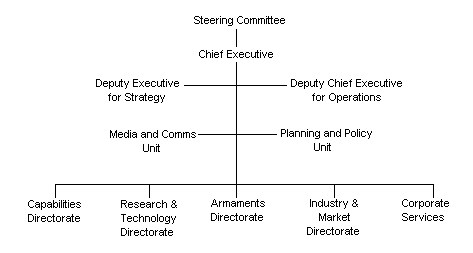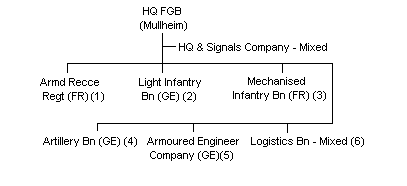|

The position of the UK Government (early 2011) is that NATO is the
cornerstone of UK national defence, but that the EU can accomplish
many tasks that are complementary to NATO.
The European Union (EU) consists of:
-
Austria
-
Belgium
-
Bulgaria
-
Cyprus (Greek part)
-
Czech Republic
-
Denmark
-
Estonia
-
Finland
-
France
-
Germany
-
Greece
-
Hungary
-
Ireland
-
Italy
-
Latvia
-
Lithuania
-
Luxembourg
-
Malta
-
Netherlands
-
Poland
-
Portugal
-
Romania
-
Slovakia
-
Slovenia
-
Spain
-
Sweden
-
United Kingdom

European Defence Agency
The European Defence Agency (EDA) was established on 12 July 2004
following a unanimous decision by European Heads of State and
Government. It was established under the Council Joint Action 2004/5
51/CFSP on the basis of Article 14 of the treaty on the European Union
(Maastricht).
The purpose of the European Defence Agency is to support the Member
States and the Council of Europe in order to improve European defence
capabilities in the field of crisis management, and to sustain and
develop the European Security and Defence Policy.
The EDA has the following tasks:
-
To improve the EU's defence capabilities
in the field of crisis management.
-
To promote European armaments
cooperation.
-
To strengthen the European defence
industrial and technological base and create a competitive European
defence equipment market, in consultation with the Commission.
-
To promote research, in liaison with
Community research activities, with a view to strengthening Europe's
industrial and technological potential in the defence field.
EDA ORGANISATION

In the longer term the EDA will achieve
its goals by:
-
Encouraging EU governments to spend
defence budgets on meeting tomorrow's challenges, not yesterday's
threats.
-
Helping them to identify common needs
and promoting collaboration to provide common solutions.
-
The EDA is an agency of the European Union
and therefore under the direction and authority of the Council, which
issues guidelines to and receives reports from the High Representative as Head of the Agency. Detailed control
and guidance, however, is the responsibility of the Steering Committee.
The Steering Committee, the principal
decision-making body of the Agency is made up of Defence Ministers
from participating Member States (all EU members except Denmark) and
a member of the European Commission. In addition to ministerial
meetings at least twice a year, the Steering Committee also meets at
the level of national armaments directors, national research
directors, national capability planners and policy directors.
The EDA's Chief Executive is Claude-France Arnould who was appointed
in January 2011. She has more than 20 years’ experience in External
Relations, Common Foreign and Security Policy and the European
Common Security and Defence Policy.
The EDA Headquarters is in Brussels (Belgium) and there is
approximately 100 staff.
The Agency had a budget of €31 million (US$£38 million) in 2010.
European Union Institute for Strategic Studies (EU-ISS)
The EU-ISS is based in Paris and was established in 2002 and is an
independent think tank that researches issues relevant to EU defence
and security. Much of the work is published and the EU-ISS organises
conferences and seminars on all aspects of EU related defence and
security.

EU Helsinki Headline Goal
2010
The European Union (EU) has adopted the following illustrative
scenarios which form the basis for force planning to meet the EU
Helsinki Headline Goal 2010:
-
Stabilisation, reconstruction and
military advice to third countries
-
Conflict Prevention
-
Evacuation Operation in a non-permissive
environment
-
Separation of Parties by Force
-
Assistance to Humanitarian Operations
UK Commitment to the European Helsinki
Goal 2010
In early 2005 the UK MoD confirmed a declaration of up to 12,500
troops towards the Helsinki Headline Goal on a voluntary case-by-case
basis. Of this figure about 35% are infantry troops.
The UK currently offers three brigades which allows the UK to provide
either an Armoured Brigade (based on Warrior Armoured Fighting
Vehicles and Challenger 2 Main Battle Tanks), a Mechanised Brigade
(based on Saxon Infantry Fighting Vehicles and Challenger 2 Main
Battle Tanks) or an Air Assault Brigade consisting of lightly equipped
infantry in the Air Manoeuvre role. An Amphibious Brigade (3 Commando
Brigade) from the Royal Navy may also be available. Up to 18 UK
warships and 72 UK combat aircraft are also available for EU
operations.
However, these national forces are made available for EU operations on
a voluntary, case-by-case basis, as for NATO or UN operations. UK
contributions to such operations are provided from within existing
forces.
As yet (early 2009) there is no standing European Rapid Reaction Force
nor any EU agreement to create one. What has sometimes been referred
to as a ‘European Rapid Reaction Force’ is, in fact, a catalogue of
forces which member states could make available to the EU should they
choose to participate in a particular EU-led operation. Any
contribution to a particular EU-led operation would depend on the
operation's requirements, the availability of forces at the time and
the willingness of EU members to participate.

EU military plans
In the immediate future, the EU plans to be able to provide at least
one coherent Battlegroup package at any one time (usually two), to
undertake Battlegroup-sized operations in support of the EU Helsinki
Headline Goals.
Full Operational Capability (FOC) was reached at the end of 2007
when all Battlegroups became available. The EU now has the capacity
to undertake at least two concurrent single Battlegroup-size rapid
response operations, including the ability to launch both such
operations nearly simultaneously.
EU Member States have indicated that they will commit to Battle
Groups, formed as follows:
| 1 |
United Kingdom |
| 2 |
France and Belgium |
| 3 |
Italy |
| 4 |
Spain |
| 5 |
France, Germany,
Belgium, Luxemburg and Spain |
| 6 |
Germany, The
Netherlands and Finland |
| 7 |
Germany, Austria and
The Czech Republic |
| 8 |
Italy, Hungary and
Slovenia |
| 9 |
Italy, Spain, Greece
and Portugal |
| 10 |
Poland, Germany,
Slovakia, Latvia and Lithuania |
| 11 |
Sweden, Finland and
Norway |
| 12 |
United Kingdom and
The Netherlands |
UK Battlegroup Involvement
From July to December 2008 the UK provided a Battlegroup force package
ready and trained to respond to emerging contingencies following a
unanimous decision of the European Council of Ministers, With Britain
having a veto, any decision to deploy the Battlegroup would have
remained with the UK. The UK Battle Group was at readiness alongside a
German-led Battlegroup with a Headquarters provided by the UK’s Joint
Force Headquarters (JFHQ).
The UK Battlegroup would have been be able to deploy within 5-10 days
and sustained initially for 30, but possibly up to 120 days while
operating up to 6,000km from Brussels.

EU Military Structures
The following table sets out the main multilateral military structures
outside NATO which include European Union members. A number of these
also include non-EU countries. In addition, there are many other
bilateral military agreements between individual EU member states.
The UK is a party to military agreements in respect of four of the
structures listed in the following table. Military agreements between
other EU members are a matter for those member states' governments.
| Structure |
EU Participants |
| EAG - European Air Group |
Belgium, France,
Germany, Italy, Spain, UK |
| European Airlift Centre |
Belgium, France,
Germany, Italy, Netherlands, Spain, UK |
Sealift Coordination Centre
(Eindhoven) |
Netherlands, UK |
| European Amphibious Initiative
(including the UK/Netherlands Amphibious Force) |
France, Italy,
Netherlands, Spain, UK |
SHIRBRIG—Stand-by High
Readiness Brigade |
Austria, Denmark,
Finland, Ireland, Italy, Lithuania, Netherlands, Norway, Poland,
Portugal, Slovenia, Spain, Sweden. (Observers: Czech Republic,
Hungary) |
| SEEBRIG—South-Eastern Europe
Brigade |
Greece, Italy,
Slovenia |
NORDCAPS—Nordic Coordinated
Arrangement for Military
Peace Support |
Finland, Sweden,
Denmark |
| EUROCORPS |
Germany, Belgium,
Spain, France, Luxembourg |
| EUROFOR |
France, Italy,
Portugal, Spain |
| EUROMARFOR |
France, Italy,
Portugal, Spain |

Eurocorps
The Eurocorps was created in 1992 and comprises military contributions
from its five framework nations: Belgium, France, Germany,
Luxembourg and Spain. The Headquarters is located in Strasbourg
(France). Austria, Canada, Greece, Italy, Poland and Turkey have
military liaison staff co-located at Eurocorps HQ.
The Commander Eurocorps (COMEC) is a Lieutenant General (3 stars).
The Deputy Commander (DCOM) is a Major General (2 stars). The staff
is directed by the Chief of Staff (COS), also a Major General and he
is supported by two Deputy Chiefs of Staff (DCOS) for Operations and
Support, both of whom are Brigadier Generals (1 star).
The posts of Commanding General, DCOM and the other general officers
as well as some key functions are filled by EC framework nations on
a rotational basis. COMEC, DCOM and COS are always of different
nationalities. Their tour of duty generally lasts for two years.
The Eurocorps consists of formations under direct operational
control and formations earmarked for assignment during an emergency:
Under direct operational control:
Formations earmarked for assignment during
an emergency:
French Contribution
Etat-Major de Force numéro 3 (EMF3) in Marseille (equivalent to a
divisional HQ) composed of:
German Contribution
The 10th Armoured Division, with its HQ in Sigmaringen, composed of:
Belgian Contribution
Belgian Operational Command Land, with its
HQ in Evere, composed of:
Spanish Contribution
1st Mechanised Division with its HQ in Burgos, composed of:
-
10th Mechanised Brigade in Cordoba
-
11th Mechanised Brigade in Badajoz
-
12th Armoured Brigade in Madrid
Luxembourg Contribution
Luxembourg assigns a reconnaissance company composed of about 180
personnel. During operations this unit would be integrated into the
Belgian contingent..
During the past decade the Eurocorps has been involved in operations
as follows:
Note: If all earmarked national
contributions were committed to operations, the Eurocorps would number
approximately 60,000 personnel.
Franco - German Brigade (FGB)
This is a joint formation which consists of both French and German
units and under the direct command of the Eurocorps.

Approximately 5,200 personnel
Notes:
(1) 3e Regiment de Hussars
(2) Jagerbataillon 292
(3) 110e Regiment d’Infanterie
(4) Panzerartilleriebataillon 295
(5) Panzerpionierkompanie 500
(6) Logistic Battalion with: Supply Company; Maintenance Company;
Transport Company; Administration & Support Company; HQ & Suport
Company.
The Eurocorps was inaugurated in January 1989 and declared
operational in October 1991.
The FGB is essentially a wheeled mechanised Brigade. It is the core
entry group for Eurocorps operations and in concert with the EU
Battlegroups the immediate EU reserve formation.

|